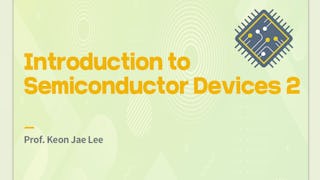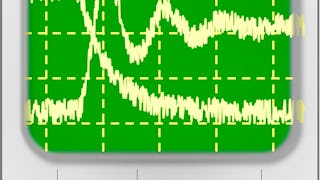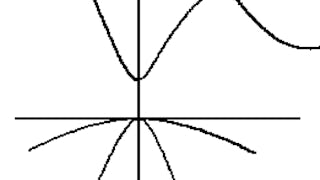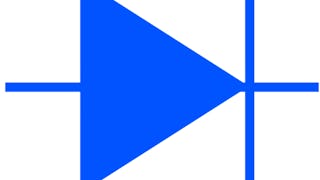This course can also be taken for academic credit as ECEA 5632, part of CU Boulder’s Master of Science in Electrical Engineering degree.

Gain next-level skills with Coursera Plus for $199 (regularly $399). Save now.

Transistor - Field Effect Transistor and Bipolar Junction Transistor
This course is part of Semiconductor Devices Specialization

Instructor: Wounjhang Park
13,833 already enrolled
Included with
(89 reviews)
What you'll learn
Describe and analyze metal-oxide-semiconductor (MOS) device
Describe and analyze MOS field effect transistor (MOSFET)
Describe and analyze bipolar junction transistor (BJT)
Skills you'll gain
Details to know

Add to your LinkedIn profile
3 assignments
See how employees at top companies are mastering in-demand skills

Build your subject-matter expertise
- Learn new concepts from industry experts
- Gain a foundational understanding of a subject or tool
- Develop job-relevant skills with hands-on projects
- Earn a shareable career certificate

There are 3 modules in this course
In this module on MOS devices, we will cover the following topics:, MOS device structure, energy band diagram for MOS device at equilibrium, Flat band condition, Accumulation, Depletion, and Inversion of MOS under bias, Energy band diagram and charge distribution for MOS in inversion, Quantitative model and relevant parameters, Energy band diagram with channel bias, Inversion layer charge, and Effect on threshold voltage of MOS in non-equilibrium, C-V characteristics: Charge distribution under different biasing conditions, C-V characteristics: Frequency dependence, Effects of oxide charge on flat band and threshold voltages in non-ideal MOS, and Types of oxide charge in non-ideal MOS.
What's included
8 videos5 readings1 assignment1 discussion prompt
In this module on MOSFETs (metal-oxide semiconductor field effect transistors), we cover the following topics: History of development of MOSFETs, Device structure, Device types, Circuit symbols, Long channel theory, I-V characteristics, Modes of operation, Channel length modulation, Body bias effect, Bulk charge effect, Sub-threshold conduction, Source/drain charge sharing in short channel devices, Drain induced barrier lowering, Subsurface punchthrough, Mobility degradation, Velocity saturation, Drain current saturation, Scaling of drain current with channel length, and Scaling of speed with channel length.
What's included
7 videos3 readings1 assignment
In this module on BJTs (bipolar junction transistors), we will cover the following topics: BJT Device structures, Energy band diagrams, Active bias, Leakage current, Recombination in base, Hoe injection, Non-uniform doping in base, Current gain, Switching with BJT, Single heterojunction bipolar transistor, Double heterojunction bipolar transistor, Non-uniform material, Early effect, Emitter bias dependence, High-level injection, Base, emitter and collector transit times, and RC time constant.
What's included
6 videos3 readings1 assignment1 peer review
Earn a career certificate
Add this credential to your LinkedIn profile, resume, or CV. Share it on social media and in your performance review.
Build toward a degree
This course is part of the following degree program(s) offered by University of Colorado Boulder. If you are admitted and enroll, your completed coursework may count toward your degree learning and your progress can transfer with you.¹
Instructor

Offered by
Explore more from Electrical Engineering
 Status: Preview
Status: PreviewKorea Advanced Institute of Science and Technology(KAIST)

University of Colorado Boulder
 Status: Free Trial
Status: Free TrialUniversity of Colorado Boulder
 Status: Free Trial
Status: Free TrialUniversity of Colorado Boulder
Why people choose Coursera for their career




Frequently asked questions
To access the course materials, assignments and to earn a Certificate, you will need to purchase the Certificate experience when you enroll in a course. You can try a Free Trial instead, or apply for Financial Aid. The course may offer 'Full Course, No Certificate' instead. This option lets you see all course materials, submit required assessments, and get a final grade. This also means that you will not be able to purchase a Certificate experience.
When you enroll in the course, you get access to all of the courses in the Specialization, and you earn a certificate when you complete the work. Your electronic Certificate will be added to your Accomplishments page - from there, you can print your Certificate or add it to your LinkedIn profile.
Yes. In select learning programs, you can apply for financial aid or a scholarship if you can’t afford the enrollment fee. If fin aid or scholarship is available for your learning program selection, you’ll find a link to apply on the description page.
More questions
Financial aid available,





